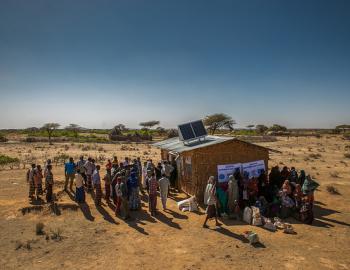POLICY BRIEF: Promoting green urban industrialisation in Ethiopia
POLICY BRIEF: Promoting green urban industrialisation in Ethiopia
African economies are looking to achieve high levels of economic growth in the next few decades, predominantly in growing urban centres. By 2035, roughly half of Africa’s population will live in its rapidly expanding cities. This transition presents significant opportunities for development: supporting structural transformation, job creation, poverty alleviation and increasing quality of lives.
However, many countries have so far struggled to take full advantage of the opportunities offered by growth and urbanisation. Moreover, if not properly managed, growth and urbanisation threaten to lock African economies into carbon-intensive development pathways and place huge demands on communities, infrastructure, services and the environmentIndustrialisation is seen as one of the most efficient pathways to achieving rapid growth and job creation, and many countries are developing industrial parks to attract and accelerate investment in designated areas, agglomerating investment in specific industries around the country while decreasing the dominance of capital cities. Ethiopia is one example of where this is happening, with a focus on 10 urban ‘clusters’ and a programme of industrial park development. A recent CDKN study across the towns of Kombolcha and Mek’ele in Ethiopia, both of which host new industrial parks, investigated the hypothesis that taking a corridor approach to urban-industrial development can support more sustainable patterns of urban growth. CDKN has identified the following key ways to promote green urban industrialisation in Ethiopia:
- Identify catalytic projects that can catalyse change, and which connect local and national priorities. Look for opportunities beyond single parks, towns and cities.
- Build institutional effectiveness: Many institutions, particularly those at regional and city levels, often lack capacity and financial resources. To overcome this
- work with existing institutions and prevailing policies
- build institutional ‘effectiveness’ incrementally focusing on policy measures, institutional adjustments and regulatory changes that can be implemented within existing capacities and building from this initial base
- promote collaborative working among institutions.
- Get the planning ‘right’: Make sure that national (e.g. national urban development spatial plans) and local urban plans (e.g. city land-use and master plans) are connected and current; that local development plans reflect local resource conditions and that they reflect the national climate strategy. The identification and development of industrial parks also needs to be integrated into these local and national plans.
- Build a supportive policy environment: A favourable policy, regulatory and institutional environment is essential to attract private investment and successfully deliver catalytic projects. Enforcement also needs to be strengthened.
- Take a more integrated approach to industrial clusters: Infrastructure bottlenecks that constrain urban productivity need to be identified and business models developed to overcome these constraints. Investments should also be packaged with green growth at the centre, which suggests reviewing existing ways in which industrial parks and cities are planned and managed.



